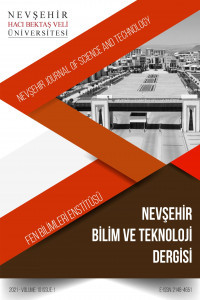Ring Eğirmeciliğinde Makine ve Konstrüksiyon Ayarlarının Şerit ve İplik Kalitesi Üzerine Etkileri
Ring iplikçiliği, makine ayarları, iplik konstrüksiyonu, iplik kalitesi, düzgünsüzlük
The Impact of Machine and Construction Settings on Sliver and Yarn Quality in Ring Spinning Process
Ring spinning, machine setting, yarn construction, yarn quality, unevenness,
___
- [1] Elhawary, I. A., “Fibre to Yarn: Staple-Yarn Spinning”, Textiles and Fashion, Cambridge, Woodhead Publishing., 191-212, 2015.
- [2] Günaydin, G. and Abdulla, G., “Dünden Bugüne Kısa Stapel İplik Üretim Teknolojileri”, SDÜ Teknik Bilimler Dergisi, 4(2), 18-28, 2014.
- [3] Shaikh, T. N. and Bhattacharya, S. S., “Engineering techniques of ring spinning”, WPI Publishing, 2016.
- [4] Wilson, J., “Fibres, Yarns and Fabrics: Fundamental Principles for the Textile Designer”, Textile Design, Cambrdge, Woodhead Publishing, 3-30, 2011.
- [5] Barella, A. and Manich, A. M., “The Influence of the Spinning Process, Yarn Linear Density, and Fibre Properties on the Hairiness of Ring-spun and Rotor-spun Cotton Yarns”, Journal of the Textile Institute, 79(2), 189-197, 1988.
- [6] Fraser, W. B., Farnell, L. and Stump, D. M., “Effect of Yarn Non-uniformity on the Stability of the Ring-spinning Balloon”, Proceedings of the Royal Society of London. Series A: Mathematical and Physical Sciences, 449(1937), 597-621, 1995.
- [7] Kadoğlu, H., “Determining Fibre Properties and Linear Density Effect on Cotton Yarn Hairiness in Ring Spinning”, Fibres & Textiles in Eastern Europe, 3 (57), 48-51, 2006.
- [8] Tyagi, G. K., Bhowmick, M., Bhattacharyya, S. and Kumar, R., “Effect of Spinning Conditions on Mechanical and Performance Characteristics of Cotton Ring-and Compact-spun Yarns”, Indian Journal of Fibre & Textile Research, 35(1), 21-35, 2010.
- [9] Hossain, M., Abdkader, A., Cherif, C., Sparing, M., Berger, D., Fuchs, G. and Schultz, L., “Innovative Twisting Mechanism Based on Superconducting Technology in a Ring-spinning System”, Textile Research Journal, 84(8), 871-880, 2014.
- [10] Islam, M. D., Rokonuzzaman, M., Saha, J., and Razzaque, A., “Effect of Machine Setting Parameters on Ring Slub Carded Yarn Quality and Spinning Performance”, Journal of Textile Science and Technology, 3(04), 45, 2017.
- ISSN: 2148-466X
- Yayın Aralığı: Yılda 2 Sayı
- Başlangıç: 2012
- Yayıncı: Nevşehir Hacı Bektaş Veli Üniversitesi
Ring Eğirmeciliğinde Makine ve Konstrüksiyon Ayarlarının Şerit ve İplik Kalitesi Üzerine Etkileri
Eren ONER, Dilara EVSEVER KOLE
Sürdürülebilir ve Çok Yönlü Akıllı Kent Kavramının Temel Taşları
Umair YOUNAS, Hale BAKİR, Ahmet Afsin KULAKSİZ
Avrupa Yeşil Başkentlerin Yeşil Alan Politikalarının İncelenmesi
Soğuk İklim Bölgeleri İçin Yeni Bir Açık-Yeşil Alan Anlayışı; Yıl Boyu Peyzaj/Peyzaj 12
Hasan YILMAZ, Naiyer Gheshlagh Sofla, Ayşegül Aksu
Otel Yapılarında Sürdürülebilir Yaklaşımlar ve Yeşil Bina Sertifikasyon Sistemleri
Peyzaj Mimarlığında Minimalist Yaklaşımlar ve Tasarım Kriterleri
Mehmet Akif IRMAK, Cihad BİLGE
Planning of Tram Stop Design: Usak University Sample
Erzurum Kentindeki Bazı Önemli Parkların Peyzaj Kalite Göstergelerinin Değerlendirilmesi
Yenilenen Park Alanlarında İklim Odaklı Tasarımlar: Erzurum Kentsel Dönüşüm Alanı Örneği
